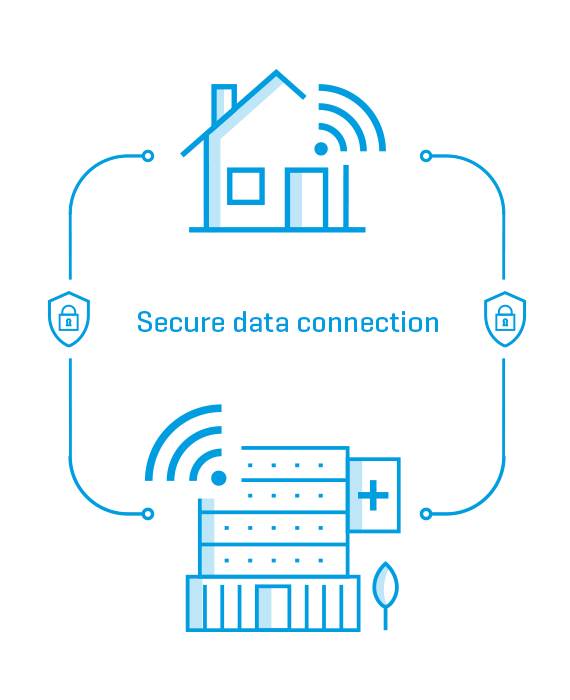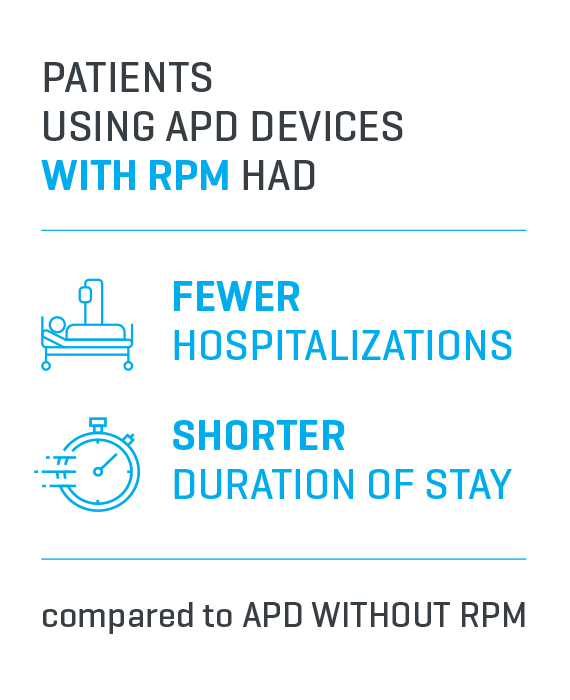Automated Peritoneal Dialysis with Remote Patient Management - Evidence
New Automated Peritoneal Dialysis (APD) cyclers with two-way Remote Patient Management (RPM) technology allows doctors and nurses to remotely and proactively manage dialysis patients, potentially improving patient outcomes and reducing hospitalizations.
#1
APD with RPM facilitates greater awareness of treatment adherence, which may allow for early intervention.
#2
In a multicenter retrospective cohort study, patients using APD with RPM had a statistically significant lower rate of hospitalization compared to APD without RPM.
#3
Clinicians switching from APD to APD with RPM spent a greater proportion of time on patient care.
#4
APD with two-way RPM technology allows nurses to individualize therapy and adjust PD programs, remotely.

Remote Patient Management (RPM)
In relation to APD, RPM allows the healthcare team to:
- View dialysis details remotely and in a timely manner
- Proactively manage clinical issues
- Amend treatment program as required
– all to potentially improve patient outcomes
This is possible due to the new APD cyclers with two-way RPM capabilities being equipped with modems and connected to the hospitals and clinics through secure data connections.

Reduction in Hospitalizations
Implementation of APD cyclers with an RPM technology may improve clinical outcomes.
In a multicenter retrospective cohort study, patients using APD with RPM demonstrated a statistically significant lower rate of hospitalization and duration of hospital stay, compared to patients using APD without RPM.1

Proactive Patient Management
APD combined with RPM potentially improves adherence to treatment, and provides the potential for early intervention if therapy complications are encountered.2
An evaluative study showed that when PD nurses implemented RPM, their time spent on proactive patient care activities increased from 2% without RPM to 34.2% with RPM, while the time spent on reactive activities decreased.2
Remote Patient Management in Peritoneal Dialysis (PD)
Patient Adherence
Patient Adherence Identification using cycler remote management technology
Reduction of Drop Out / Reduction of Hospitalizations
Trends in Outcomes for an Automated Peritoneal Dialysis Program with and without Remote Management in Colombia
Patient Management & Efficiency
Impact of remote patient management in hospitals conducting APD: shifting the nursing care paradigm
Patient Management & Efficiency Reduced Costs and Resources
Longitudinal Experience with Remote Monitoring for Automated Peritoneal Dialysis Patients
